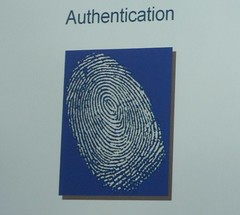
Cognitive biometrics is a novel approach to user authentication
Retina and iris scans, fingerprint and palm logins rely on possession of unique anatomical characteristics that you cannot forget as you might a password. But, Kenneth Revett of the British University in Egypt, in El-Sherouk City, reviews the state of the art in an alternative approach to user authentication in the inaugural issue of the International Journal of Cognitive Biometrics.
“Cognitive biometrics is a novel approach to user authentication and/or identification that utilises the response(s) of nervous tissue,” explains Revett, who is the journal’s academic editor. He explains that cognitive biometrics relies on the response of the subject when they are presented with a particular stimulus such as a familiar photograph, a song, a puzzle, or even a Rorschach ink blot.
The response can be acquired through a variety of techniques, including: electroencephalogram (EEG), an electrocardiogram (ECG), electrodermal response (EDR), blood pulse volume (BVP). Other techniques such as near-infrared spectroscopy (NIR), electromyogram (EMG), eye trackers (pupilometry), hemoencephalography (HEG), and related technologies might also be used. The validation of the user is then based on the matching of their response to the stimulus with a pre-recorded ECG, EEG or other metric. The stimuli are designed to elicit responses that are sensitive to the individual’s genetic predispositions, modulated by subjective experiences.
Revett points out that cognitive biometrics can “provide a more intuitive and arguably a more robust and user-friendly authentication protocol that is suitable for both static and continuous authentication requirements,” he says.
via Science Daily ᔥ
Bookmark this page for “Cognitive Biometrics” and check back regularly as these articles update on a very frequent basis. The view is set to “news”. Try clicking on “video” and “2” for more articles.








